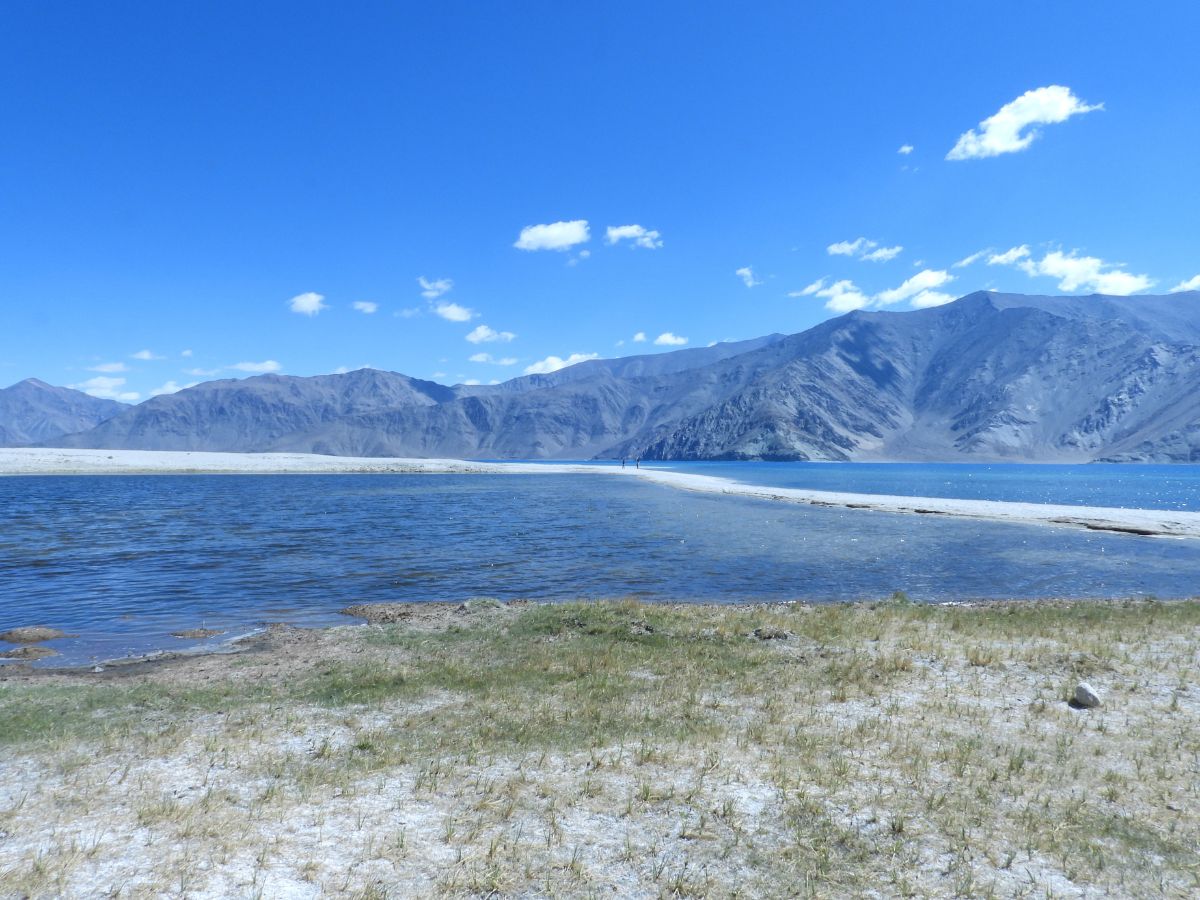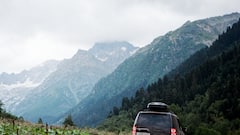Eurasian Magpie, Mongolian Finch, Himalayan Vulture & More — Take A Ladakh Birding Tour To Lift Your Senses
‘Cosmic cliffs’ Webb image recently shared by NASA bears striking resemblance to the landscape of Ladakh — not a mere coincidence that the region is part of ‘roof of the world’, closest to the cosmos.

“Once a year, go someplace where you have never been before” — The Dalai Lama (from his 20 rules for living)
My edit — The remoter the place, the better!
And just like that, from an altitude of 4 metres above seal level, I landed at 3,256 metres above seal level at the Kushok Bacula Rimpochee Airport in Leh on a windy morning, in the quest of exotic animal life of Ladakh. My PhD guide and a friend were partners on the adventure, exploring the Changthang plateau in the ‘land of the lamas’.
Leh
Flying in directly, we were advised to rest for two days to get acclimatised with the sudden altitude change. The homestay in Leh offered stunning views along with ample sightings of possibly the most conspicuous bird of Ladakh: the Eurasian magpie — quirky and curious, smartly dressed in white with bluish-green wings. With sightings of House sparrows and Black redstarts, we kicked off our birding tour.
Ominous clouds had gathered when we set off late evening for local birding but it became sunny and bright after a spell of rain. Having shaped the history and geography of our nation, the mighty Indus kindled awe in us, and our time on the Sindhu ghat was rewarding as we spotted a lone Ibisbill filter-feeding in the water beside a soft drink can, while Citrine wagtails played peek-a-boo and a nest was being refurbished by a busy Hoopoe.
At the Shey marshes, undulating mounds contrasted with blue mountains against the turquoise sky dotted with wispy clouds. We were enraptured by a pair of Common rosefinches flitting in the bushes until a grim Carrion crow cawed for our attention.

Nubra and Hunder
En route to Nubra valley, the green of the Willow and Poplars gave way to grey-rugged mountains with yaks and dzos (a hybrid of yak with cattle) dotting the slopes. As the car inched its way, above 5,000 metres towards Khardungla, snow fell intermittently and we spotted a Marmot lost in thought, transfixed to a rock. The drive alongside Shyok (the “river of death”) with occasional sightings of the alluring Chukar partridge made the day memorable.
The guest house where we stayed in Diskit village offered first-class amenities along with lovely food for the next couple of days. The colour of the apples on the trees matched the roses in the garden.
Our tour organiser Sachin Pushkarna’s keen eyes spotted the Mongolian finch, remarkably camouflaged in the buff sand. After a pit stop at the sandunes — home to the last population of Bactrian camels in India — a remnant of the erstwhile Silk Route, we headed to the most beautiful Warila pass. Despite my chapped lips, peeling skin and deeply tanned face, the stunning vistas at every turn of the road made up for the discomfort.
In the crystal-clear stream skimmed brightly coloured odonates and a turquoise-blue butterfly while burly bumble bees — exclusive to such high altitudes — were seen buzzing near the blooms.
Scanning for birds, we came across the Blue sheep (Bharal) silhouetted against the azure sky. Contrary to its name, it is a goat species, nimble and agile on the mountain slopes. Warila became unforgettable also because we chased the elusive White-throated dipper in the rapids hoping to get a good shot.

Sakti and Pangong
After a night halt at the Solpon homestay in the picturesque Sakti village, we continued our journey with ‘Om mani padme hum’ playing in the car as we crossed Changla pass. Driving along the breathtakingly beautiful Pangong lake — made infamous by the movie ‘3 idiots’ — we headed to Merak village to spend the night. As we were driving very close to the Line of Actual Control, Army checkpoints and bunkers became commonplace.
The inexplicably beautiful Pangong with an area of 700 km2, lies 40 per cent in Ladakh. On the banks of the lake we saw a mother Red fox with two pups frolicking until they got tired of our prying cameras and retreated into their cave. It was freezing when we reached our guesthouse, but the warmth of the hosts melted our hearts. The sun finally set at 7.30 pm (summer) and as the near-full moon rose above the horizon, the lake glistened in the silvery moonlight- stirring a deeply spiritual connect with The Supreme.
The following day, we came across scores of Desert wheatears, Horned larks and were fortunate to listen to the Chinese rubythroat’s solo rendition while at the lake a pair of Brahminy shelducks were foraging.

Hanle
Bidding adieu to Merak, we headed to Hanle via Tsagala pass, the site of India’s highest astronomical observatory situated on top of a hill. And although the uphill climb made us breathless, we were happy to spot the IUCN red listed (Near Threatened) Himalayan vulture soaring high and, on a rock, basked an imposing agamid who gracefully posed for pictures.
Hanle is also home to Ladakh’s last population of the Tibetan gazelle, which we failed to see but spotted the endemic Wild ass species, Kiang, in plenty, browsing in the meadows, along with Pashmina goats, tended to by nomads called Changpas in the local language. The craggy hills of Hanle proved to be ideal for the sighting of mammals like the Red fox, Pika and birds like Great Rosefinch, Tibetan lark, Hume’s short-toed lark, Twite and Brandt’s mountain finch.
Braving the cold, we had planned to head for birding at dawn, but woke up to the sight of heavy snowfall, which prompted us to build miniature snowmen before rushing back into the warm room of our homestay.

Tsokar
Our last stop was at India’s 42nd Ramsar site- Tsokar lake - which seemed to be one of the remotest places on earth. Even though the Tsokar Eco resort, had limited amenities, we tasted the most amazing Thukpa and Thenthuk- thanks to Phuncho and his team, who incidentally also teaches Ladakhi dance moves when free. In the charming dining area, we spent hours discussing wildlife over endless cups of hot Ladakhi tea.
The lake-shore harbours salt deposits-a favourite burrowing site for Pikas and foraging site for alpine-steppe birds like Hume’s groundpecker, Great rosefinch and Long tailed Shrike. From the floating islands rose the cacophony of roosting Crested grebes, Bar-headed geese and Brown-headed gulls and as we walked closer to the lake, scores of non-biting midges engulfed us in swarms- flying into our eyes and mouth. We struggled to keep them at bay but the birds enjoyed the snack.
We were thrilled to see the Black necked crane- the flagship bird of Ladakh, standing tall with its characteristic black neck and red crown-patch, revered culturally and famous for its spectacular courtship displays.
It was snowing as we drove down Taglangla back to Leh, reminiscing about the fun we had munching slices of watermelon in the expansive grasslands of Tsokar, when a Tibetan wolf peered at us from the mountains- a fitting farewell to mark the end of our amazing journey.

The indispensables and dependables
It is not easy to locate camouflaged animals from a moving car, but Sachin’s eyes worked wonders spotting birds meters away who also entertained us with adventure tales and melodious songs. The arduous journey through paved, unpaved, often risky roads could never have been possible without sprightly Stanzin’s supreme driving skills, who embodied the Buddhist spirit of being cheerful even in the most trying situations such as when he had to drive up and down the same night in order to fetch fuel when we couldn’t refuel at a station which had run out of diesel.
In hindsight
Life in Ladakh, during the short summers is manageable, even pleasurable, but getting through the harsh winters when temperatures can plummet to -40 degrees is no joke and without proper electricity and transportation, is foreboding. I also fear that excessive tourist presence, especially now when the pandemic is receding, would hamper its fragile ecosystem. But then, I decide to practise the Buddhist way of giving up unwanted anxiety, and savour the present.
Parting Julley
After I reached home and saw the latest images of the cosmos released by NASA, a particular one, called ‘Cosmic cliffs’ caught my attention due to its striking resemblance to the bare, yet sublime landscape of Ladakh — not a mere coincidence that the region is part of the ‘roof of the world’, closest to the cosmos.
The author works with the Food Corporation of India. With a doctorate in Zoology, she travels across India researching birds, bugs and beasts.
[Disclaimer: The opinions, beliefs, and views expressed by the various authors and forum participants on this website are personal and do not reflect the opinions, beliefs, and views of ABP News Network Pvt Ltd.]

Trending News
Top Headlines











































